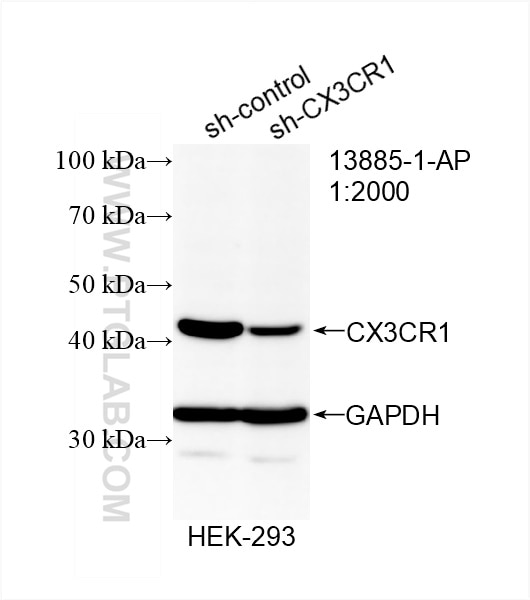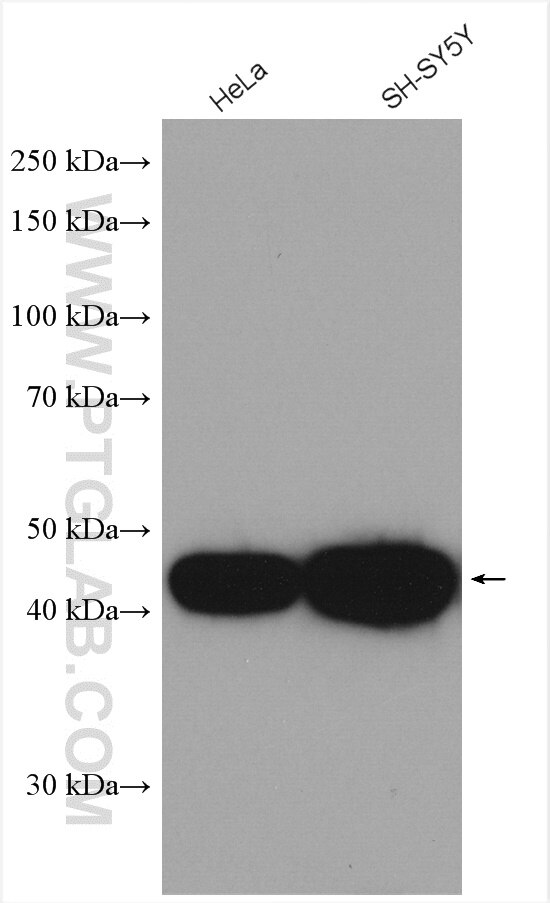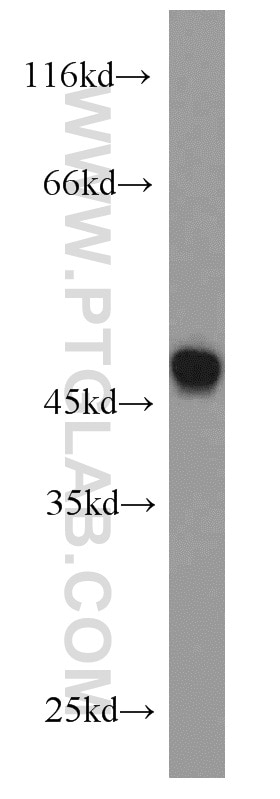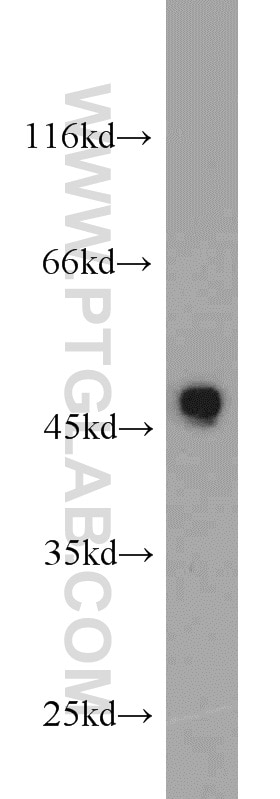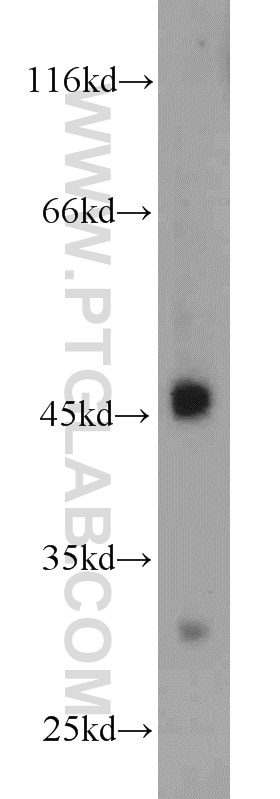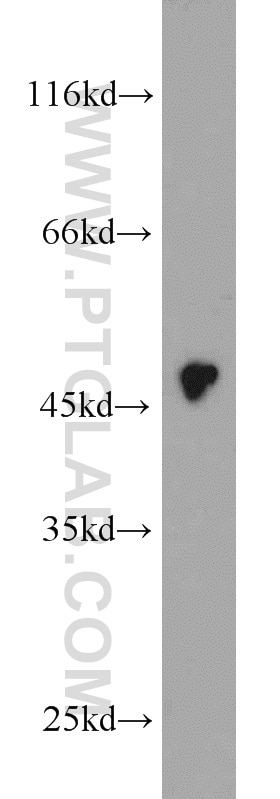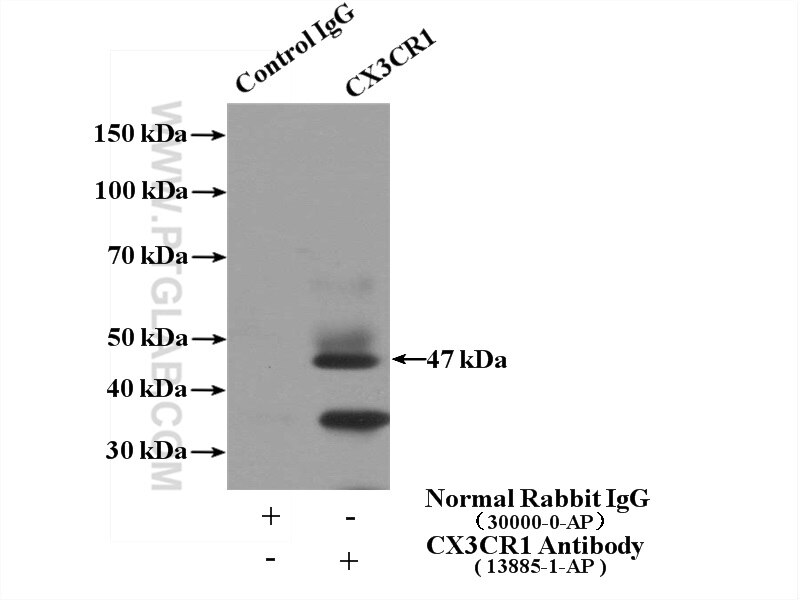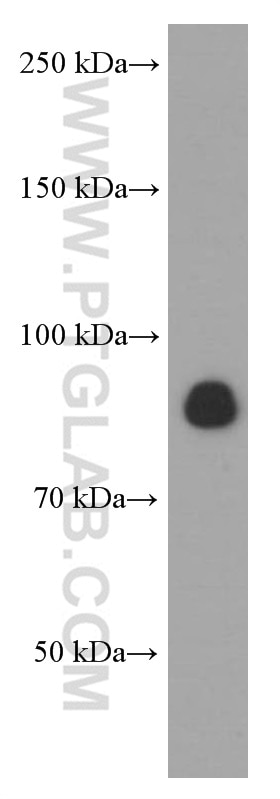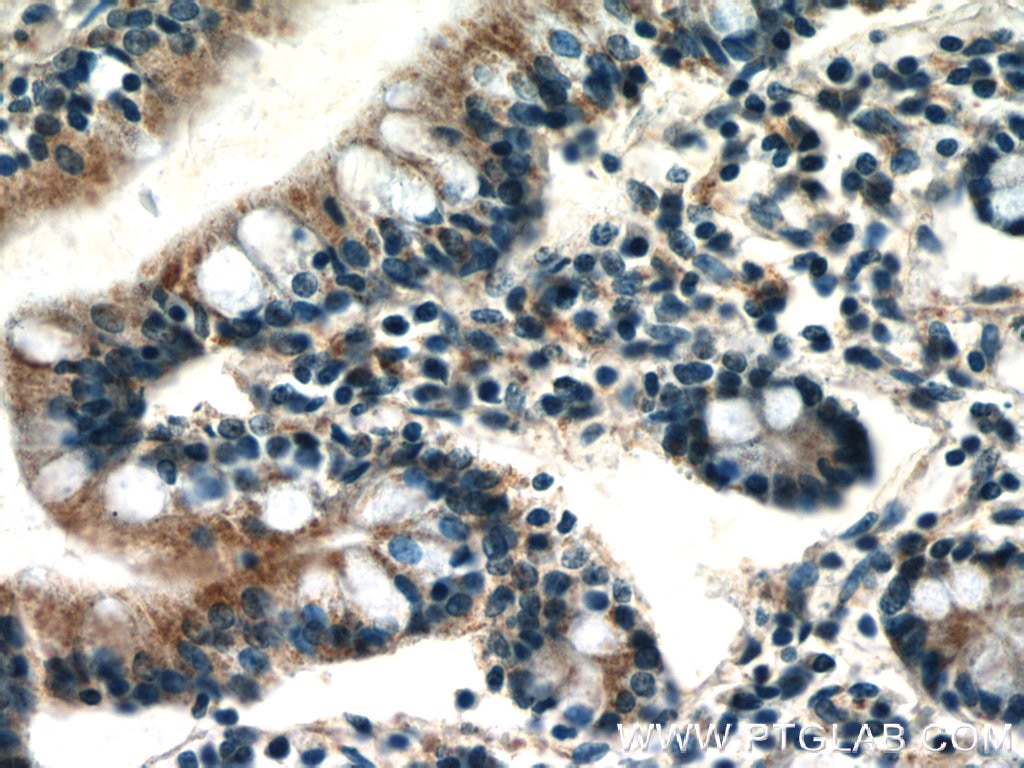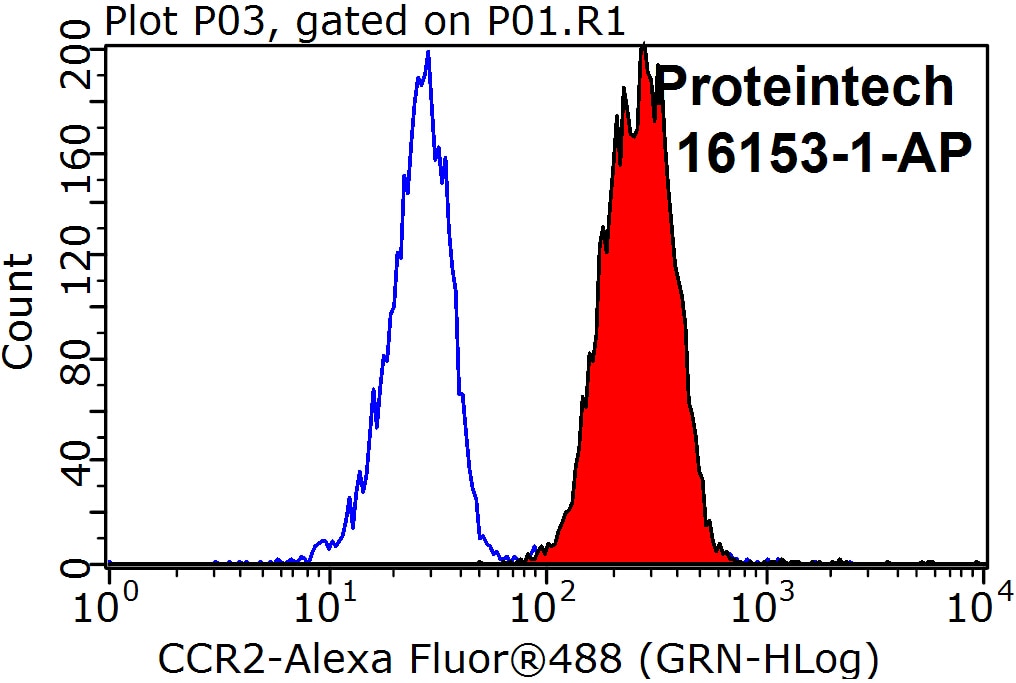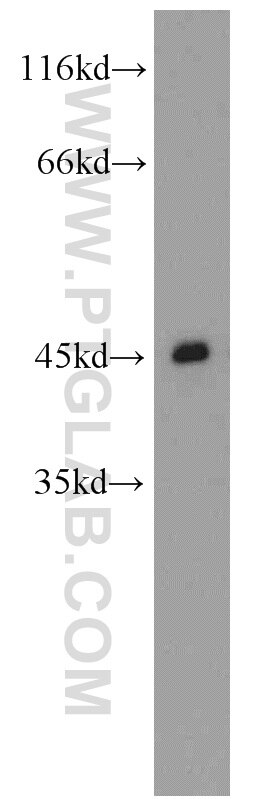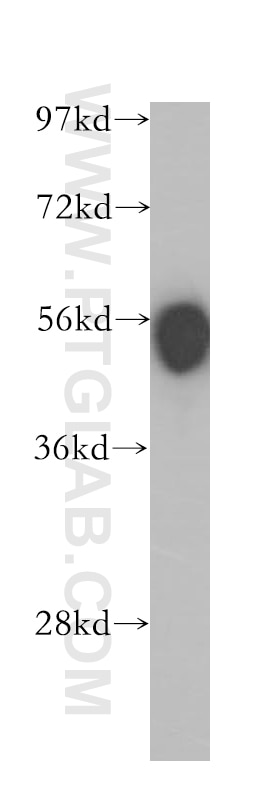- Featured Product
- KD/KO Validated
CX3CR1 Polyklonaler Antikörper
CX3CR1 Polyklonal Antikörper für WB, IP, ELISA
Wirt / Isotyp
Kaninchen / IgG
Getestete Reaktivität
human und mehr (2)
Anwendung
WB, IP, IF, IHC, CoIP, ELISA, Cell treatment
Konjugation
Unkonjugiert
Kat-Nr. : 13885-1-AP
Synonyme
Galerie der Validierungsdaten
Geprüfte Anwendungen
| Erfolgreiche Detektion in WB | HeLa-Zellen, HEK-293-Zellen, HL-60-Zellen, K-562-Zellen, SH-SY5Y-Zellen, U-937-Zellen |
| Erfolgreiche IP | SH-SY5Y-Zellen |
Empfohlene Verdünnung
| Anwendung | Verdünnung |
|---|---|
| Western Blot (WB) | WB : 1:1000-1:4000 |
| Immunpräzipitation (IP) | IP : 0.5-4.0 ug for 1.0-3.0 mg of total protein lysate |
| It is recommended that this reagent should be titrated in each testing system to obtain optimal results. | |
| Sample-dependent, check data in validation data gallery | |
Veröffentlichte Anwendungen
| KD/KO | See 2 publications below |
| WB | See 24 publications below |
| IHC | See 11 publications below |
| IF | See 6 publications below |
| IP | See 1 publications below |
| FC | See 1 publications below |
| CoIP | See 1 publications below |
Produktinformation
13885-1-AP bindet in WB, IP, IF, IHC, CoIP, ELISA, Cell treatment CX3CR1 und zeigt Reaktivität mit human
| Getestete Reaktivität | human |
| In Publikationen genannte Reaktivität | human, Maus, Ratte |
| Wirt / Isotyp | Kaninchen / IgG |
| Klonalität | Polyklonal |
| Typ | Antikörper |
| Immunogen | CX3CR1 fusion protein Ag4149 |
| Vollständiger Name | chemokine (C-X3-C motif) receptor 1 |
| Berechnetes Molekulargewicht | 40 kDa |
| Beobachtetes Molekulargewicht | 44-47 kDa |
| GenBank-Zugangsnummer | BC028078 |
| Gene symbol | CX3CR1 |
| Gene ID (NCBI) | 1524 |
| Konjugation | Unkonjugiert |
| Form | Liquid |
| Reinigungsmethode | Antigen-Affinitätsreinigung |
| Lagerungspuffer | PBS mit 0.02% Natriumazid und 50% Glycerin pH 7.3. |
| Lagerungsbedingungen | Bei -20°C lagern. Nach dem Versand ein Jahr lang stabil Aliquotieren ist bei -20oC Lagerung nicht notwendig. 20ul Größen enthalten 0,1% BSA. |
Hintergrundinformationen
CX3CR1, also known as GPR13, V28 and fractalkine receptor, belongs to the 7-transmembrane G protein-coupled receptor (GPCR) family. It is expressed on microglia, astrocytes, NK cells, monocytes/macrophages, and a subpopulation of T cells. CX3CR1 is the receptor for fractalkine (CX3CL1) and mediates both its adhesive and migratory functions. It also acts as coreceptor with CD4 for HIV-1 virus envelope protein (in vitro), and some variations in the gene of CX3CR1 lead to increased susceptibility to HIV-1 infection and rapid progression to AIDS. Defects in CX3CR1 are a cause of susceptibility to age-related macular degeneration type 12 (ARMD12).
Protokolle
| Produktspezifische Protokolle | |
|---|---|
| WB protocol for CX3CR1 antibody 13885-1-AP | Protokoll herunterladen |
| IP protocol for CX3CR1 antibody 13885-1-AP | Protokoll herunterladen |
| Standard-Protokolle | |
|---|---|
| Klicken Sie hier, um unsere Standardprotokolle anzuzeigen |
Publikationen
| Species | Application | Title |
|---|---|---|
Brain Reactive microglia enhance the transmission of exosomal alpha-synuclein via toll-like receptor 2. | ||
Tissue Cell Analysis of Aβ-induced neurotoxicity and microglial responses in simple two- and three-dimensional human iPSC-derived cortical culture systems | ||
J Control Release Chemoattractants driven and microglia based biomimetic nanoparticle treating TMZ-resistant glioblastoma multiforme. | ||
Nanoscale Calming egress of inflammatory monocytes and related septic shock by therapeutic CCR2 silencing using macrophage-derived extracellular vesicles. | ||
Mol Oncol Platelets are recruited to hepatocellular carcinoma tissues in a CX3CL1-CX3CR1 dependent manner and induce tumour cell apoptosis. | ||
J Nanobiotechnology Biomimetic GBM-targeted drug delivery system boosting ferroptosis for immunotherapy of orthotopic drug-resistant GBM. |
Rezensionen
The reviews below have been submitted by verified Proteintech customers who received an incentive for providing their feedback.
FH Reyes (Verified Customer) (03-01-2024) | Cx3cr1 antibody (in red) tried on human paraffin brain sections, apparently vesicular while marking my microglia.
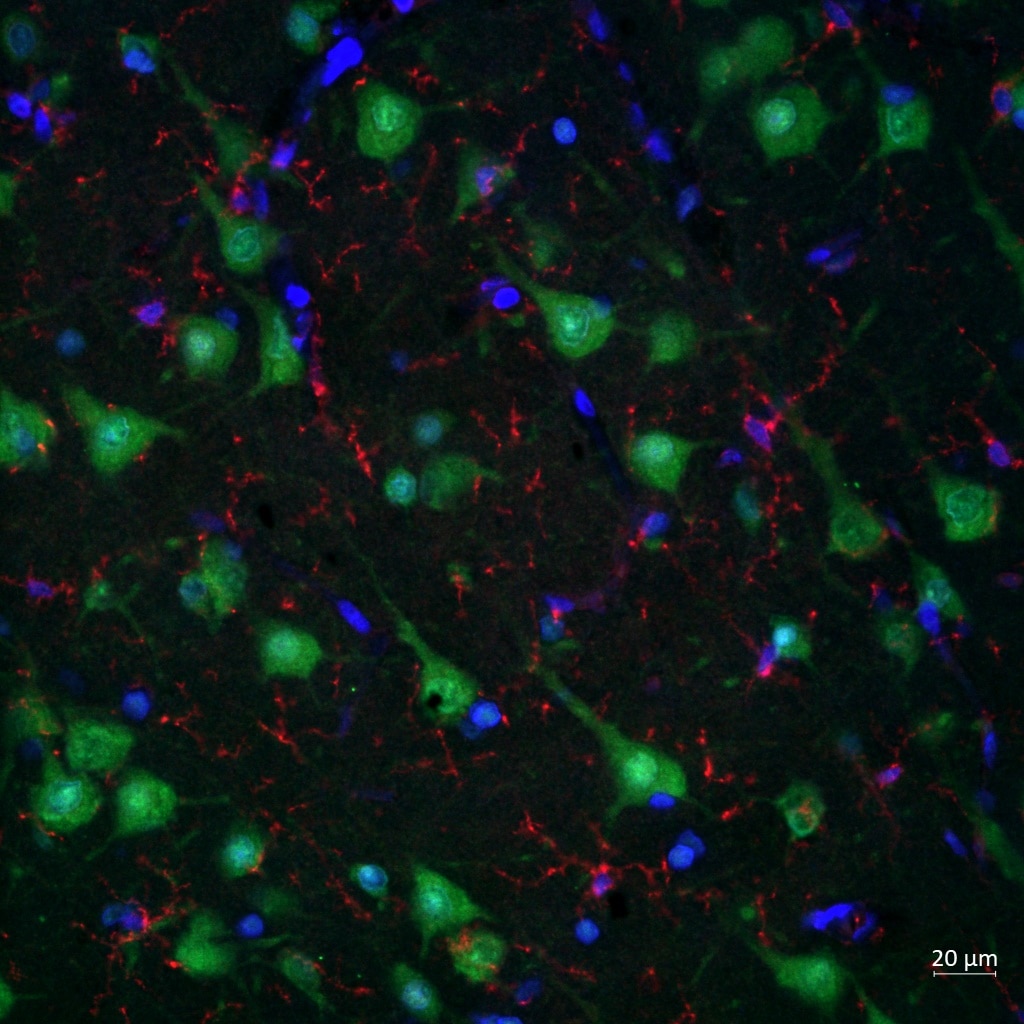 |
FH Ryan (Verified Customer) (06-15-2018) |
|
